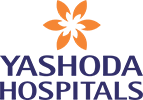Shoulder Arthroscopy : Procedure, Recovery and Post-Procedure Care
Preparation for Shoulder Arthroscopy
Prior to proceeding with shoulder arthroscopy, the surgeon will ask about the medical history and the medications that are taking. It may be necessary to discontinue some drugs for several days ahead of surgery. The surgeons will provide tailored guidance on dietary requirements and protocols to follow. Duplex scan imaging, chest X-rays, blood tests, and electrocardiograms are suggested to know the status before surgery.
During Shoulder Arthroscopy
A semi-seated or supine position is assumed prior to the surgery, where the patient is shaved and cleansed. The surgeon can pump fluid into the shoulder to create some degree of inflation in the joint cavity. An incision is made above the shoulder through which a camera is introduced in order to display the images on a monitor screen. Several other small cuts and tools are also used during this procedure. At last, after the operation, all these incisions are closed, and stitches or a little dressing may be given to the patient.
After the procedure
In most cases, outpatient shoulder arthroscopies take less than an hour, and this allows one to be able to go back home soon thereafter. The patient must also spend an hour or two in recovery after the surgery while considering that he/she may need painkillers.
Shoulder Arthroscopy recovery
Following arthroscopy on the shoulder, recovery can take weeks or even months. There may be swelling and fever for a few weeks; inflammation can be managed by ice and analgesics; placing themselves in an elevated position while asleep may also help one who feels reeling due to injury. Movement rehabilitation and physiotherapy are advised after some time.
Post-procedure care: Post-operative care for shoulder arthroscopy:
- Maintain the dressing for about 2–3 days after surgery before removing it. Ensure that the healing sites are clean and dry.
- Support the shoulder with a sling to prevent any movement.
- Adhere to the painkiller medication as prescribed by the doctor.
- Undergo physiotherapy to regain mobility and eventually, shoulder functions.
- Have a balanced diet, as it will help one to heal faster and avoid constipation.
- Apply ice packs as instructed by the doctor in order to reduce pain and swelling.
| Procedure Name |
Shoulder Arthroscopy |
| Type of Surgery |
Minimally invasive or open |
| Type of Anesthesia |
General anesthesia |
| Procedure Duration |
1 hour |
| Recovery Duration |
Few weeks to a few months |
Benefits of Shoulder Arthroscopy
- Safe, Effective Procedure for Mobility Regain.
- Relieves Long-Term Pain and Increases Mobility.
- Improves Quality of Life.
- Minimal Hospitalisations.
- Greater Flexibility and Reduced Risk of Dislocation.
Choose Yashoda Hospitals and lead a healthy life under our expert care. Explore the pros and find affordable Shoulder arthroscopy cost today!




 Appointment
Appointment WhatsApp
WhatsApp Call
Call More
More